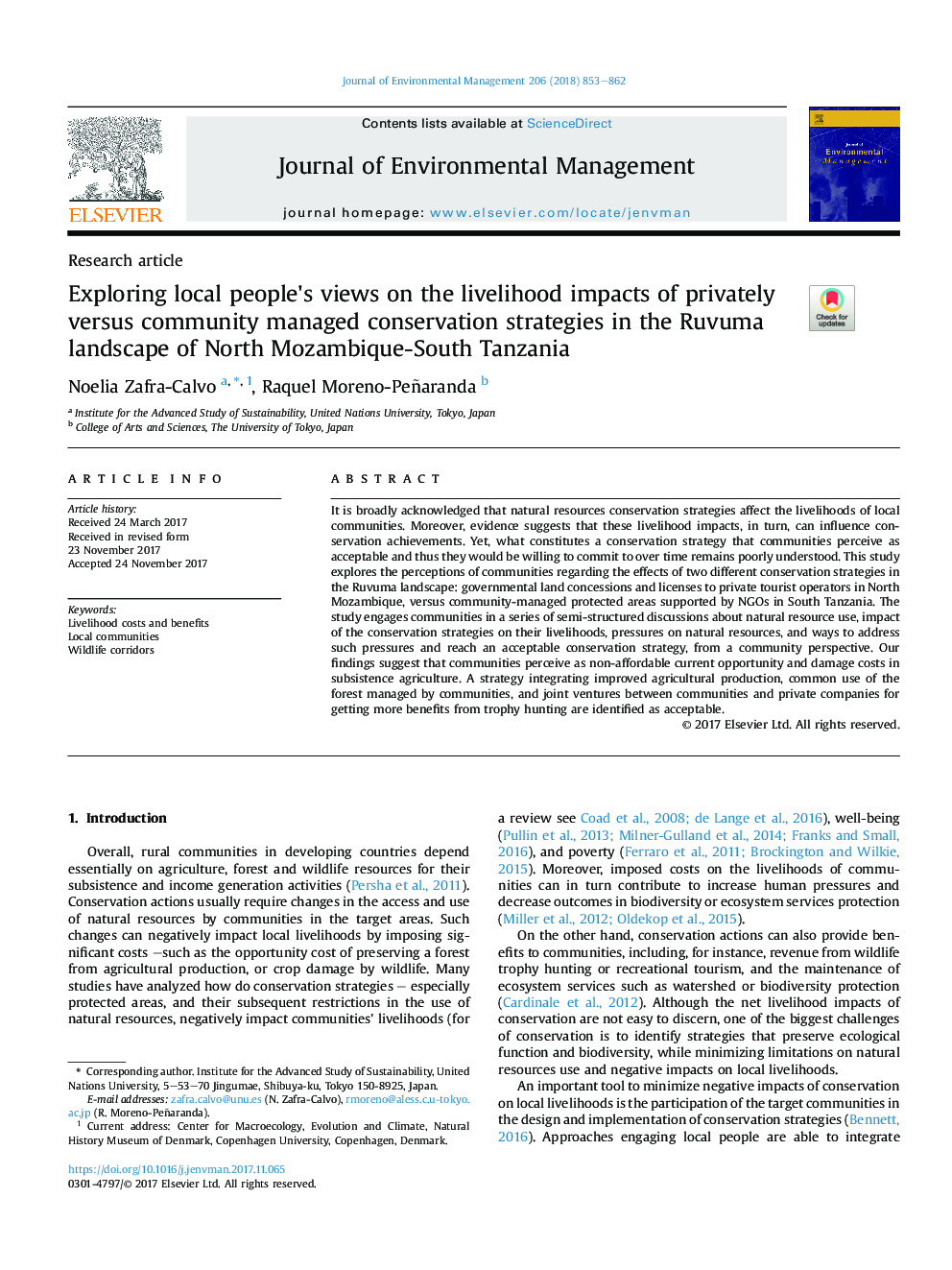| Article ID | Journal | Published Year | Pages | File Type |
|---|---|---|---|---|
| 7478852 | Journal of Environmental Management | 2018 | 10 Pages |
Abstract
It is broadly acknowledged that natural resources conservation strategies affect the livelihoods of local communities. Moreover, evidence suggests that these livelihood impacts, in turn, can influence conservation achievements. Yet, what constitutes a conservation strategy that communities perceive as acceptable and thus they would be willing to commit to over time remains poorly understood. This study explores the perceptions of communities regarding the effects of two different conservation strategies in the Ruvuma landscape: governmental land concessions and licenses to private tourist operators in North Mozambique, versus community-managed protected areas supported by NGOs in South Tanzania. The study engages communities in a series of semi-structured discussions about natural resource use, impact of the conservation strategies on their livelihoods, pressures on natural resources, and ways to address such pressures and reach an acceptable conservation strategy, from a community perspective. Our findings suggest that communities perceive as non-affordable current opportunity and damage costs in subsistence agriculture. A strategy integrating improved agricultural production, common use of the forest managed by communities, and joint ventures between communities and private companies for getting more benefits from trophy hunting are identified as acceptable.
Keywords
Related Topics
Physical Sciences and Engineering
Energy
Renewable Energy, Sustainability and the Environment
Authors
Noelia Zafra-Calvo, Raquel Moreno-Peñaranda,
